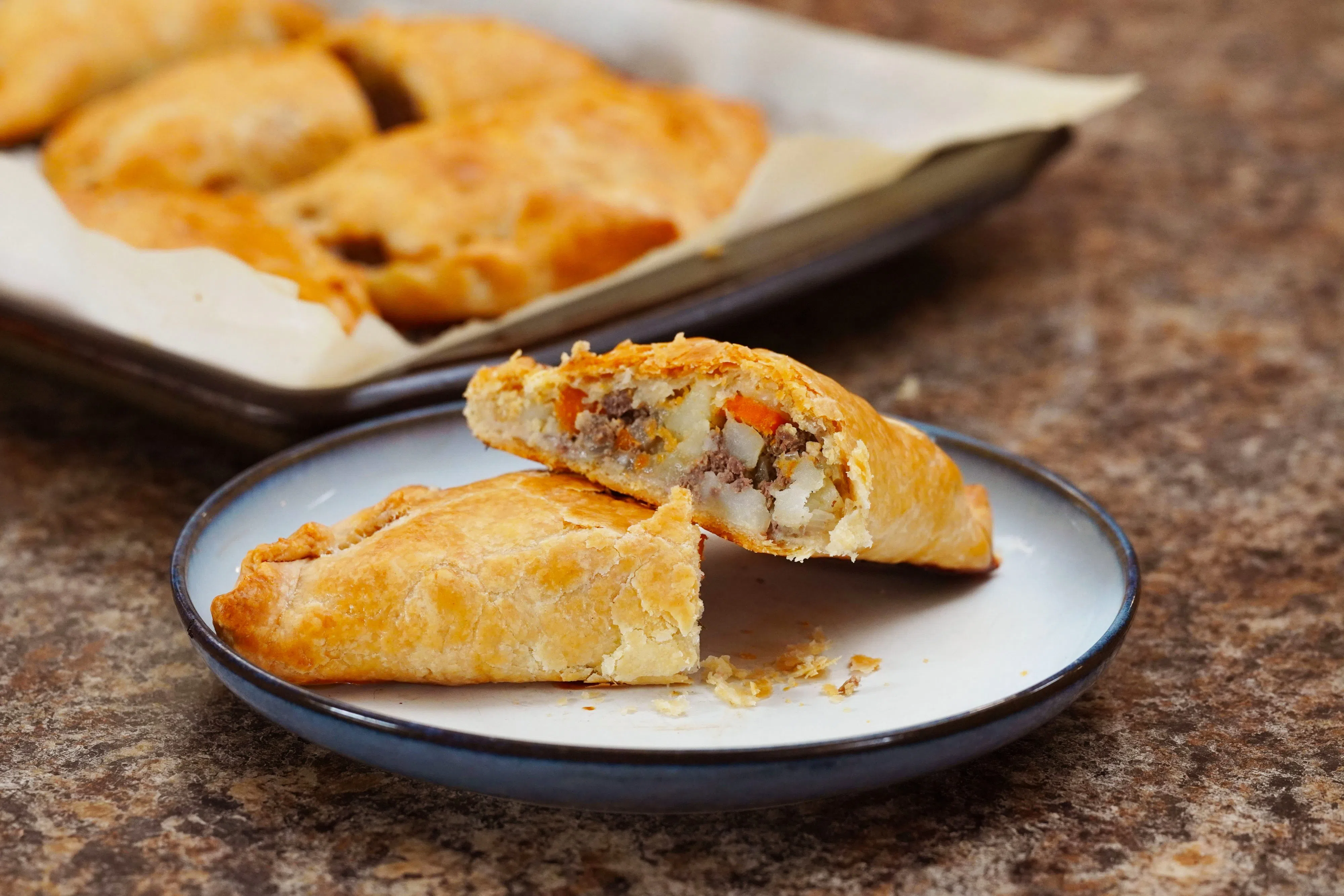
Ashley Peterson Photo Credit:NDGF venison pastys
By Doug Leier
I spend a lot of time talking about the outdoors and one of the more recent conversations connected with old timers eating everything “but the squeal” from a pig to acknowledge how our generations couldn’t afford to waste anything consumed as food. It was a generation and time through the Depression and world wars when ends were met by rationing gas and supplies to basically shaming any food waste. You just couldn’t afford to throw anything away.
When it came to meat, we always had beef from the pasture, but just as common on the table was wild game. I grew up eating doves, ducks, partridge and grouse. The pheasant numbers were thin as the soup, which meant putting deer sausage, roasts and burger in the deep freeze. When I say we ate everything, I mean it. Those who simply breasted out a pheasant likely have never split the gizzard of a grouse or know how small and tough partridge and dove hearts can be. They didn’t fill us up, but mixed in with potatoes literally gave a little heart to the plate and palate. I can’t say to this day I long for eating “everything but the feathers.”
Deer liver and heart were fried up with bacon and onions and my cholesterol today doesn’t allow it. I can’t say I didn’t get my fill. What I can say is the modern movement towards food fitting their definition of “free range,” “natural” or “organic” should look to the fields for more than just getting back to nature.
For those new to wild game dining, let me remind you that you can’t make a fillet mignon out of ground chuck. If you don’t take care of the meat in the field, no amount of seasoning or any
style of preparation will overcome the damage done. Take care of your game from the field to the fork. Properly cleaning the meat, cooling it down quickly, keeping it cool and processing it efficiently are important. Along with that, proper packaging and storage will ensure the meat stays fresh longer.
Armchair deer processors will fry pounds of back straps as they work their way through carcasses. When the work is done, the end result is an array of products, from breakfast sausage, deer roasts and burger, to venison brats, summer sausage and stew meat.
Odds are, if you enjoy traditional food such as stirfry, you’ll be able to modify the recipe to include the bounties of nature. Some will work with the flavor and the texture of the meat to enhance it. Others may prefer to mix in different rubs, spices or sauces. It’s up to the individual.
I’d venture to guess that for every cut of meat or species of fish or game, somebody has tried a unique way to prepare or cook it, and they probably have a recipe or even an instruction video online somewhere if you want to look for new ideas. However, like other internet advice, you may want to stop and think before you give woodchuck soup a try. Yes, it exists, and no I haven’t tried it. And don’t really want to.
The bottom line is that all of us who hunt and fish can look back on days afield or on the water when we had memorable times with no game or fish in the bag on the way home. It’s those types of days that help us appreciate all the more the successes that lead to fine dining courtesy of our great outdoors.




Comments